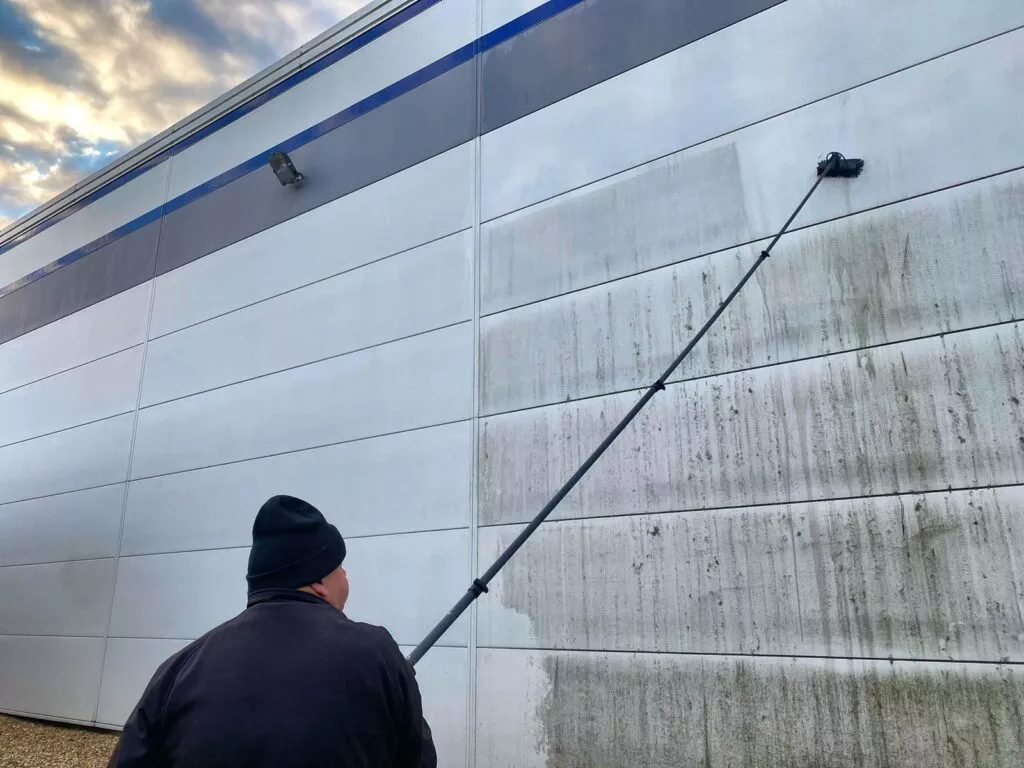In today’s environmentally conscious landscape, sustainable practices are becoming increasingly integral to the maintenance and operation of commercial buildings. One area where eco-friendly solutions can make a significant impact is in cladding cleaning. Cladding, which often covers large portions of buildings, plays a crucial role in aesthetics, weatherproofing, and insulation. However, traditional cleaning methods often involve harsh chemicals that can harm the environment and pose health risks to building occupants and maintenance staff. To address these concerns, many building managers and cleaning companies are turning to sustainable alternatives. One effective approach is the use of biodegradable cleaning agents. These agents are formulated to break down naturally without leaving harmful residues that could pollute waterways or soil. They offer a safe yet powerful option for removing dirt, grime, and pollutants from cladding surfaces without compromising on cleaning efficacy. Another eco-friendly practice gaining traction is the adoption of water-saving techniques. High-pressure washing systems that minimize water consumption while maximizing cleaning power are becoming more prevalent.

These systems not only reduce water usage but also limit wastewater runoff, which can contain pollutants that harm local ecosystems. Additionally, capturing and recycling water from cleaning operations further enhances sustainability efforts by conserving this precious resource. Furthermore, the choice of cleaning equipment itself can contribute to sustainability goals. Selecting energy-efficient machines and tools reduces overall energy consumption during cleaning operations. This not only lowers operational costs but also lessens the building’s carbon footprint, aligning with broader environmental objectives. In addition to the cleaning process, proactive maintenance strategies can extend the lifespan of cladding materials, reducing the need for frequent cleaning and replacement. Regular inspections and repairs help address minor issues before they escalate, preserving the integrity and appearance of the cladding while minimizing environmental impact of professional cladding cleaning for business offices. Beyond the immediate benefits to the building and its surroundings, adopting eco-friendly cladding cleaning practices can enhance a company’s reputation. Businesses that prioritize sustainability demonstrate corporate responsibility and attract environmentally conscious tenants and customers.
This can lead to improved tenant retention, higher property values, and a competitive edge in the market. Moreover, regulatory pressures and industry standards increasingly favor sustainable building practices. Compliance with green building certifications such as LEED Leadership in Energy and Environmental Design can open doors to incentives and recognition for environmentally responsible building management practices. In conclusion, embracing eco-friendly cladding cleaning solutions is not just a matter of environmental stewardship but also a strategic decision for commercial building owners and managers. By choosing biodegradable cleaning agents, water-saving technologies, energy-efficient equipment, and proactive maintenance strategies, stakeholders can achieve cleaner buildings while reducing environmental impact and operating costs. As sustainability continues to shape the future of the built environment, these practices will play an essential role in ensuring buildings are not only clean and attractive but also contribute positively to the overall well-being of communities and the planet.
